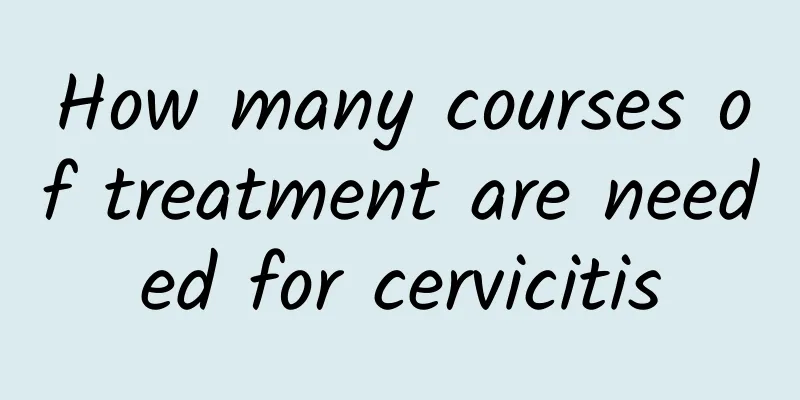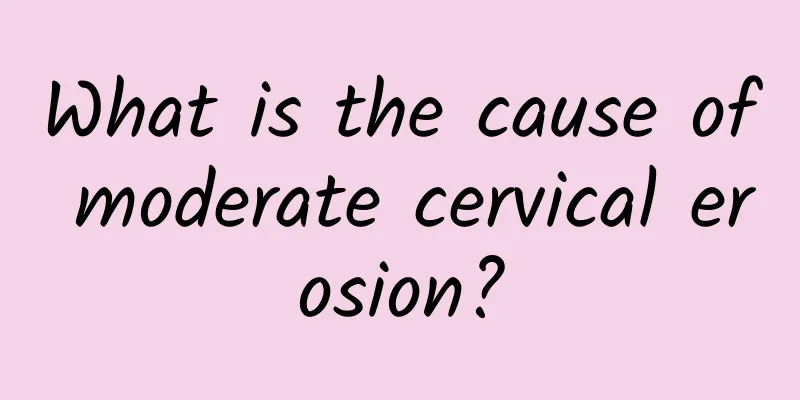How many courses of treatment are needed for cervicitis

|
The course of treatment for cervicitis varies from person to person, and usually requires 1-3 courses of treatment, depending on the severity of the condition and the treatment method. Mild cervicitis may be relieved within 1-2 courses of treatment with medication, while chronic or severe cervicitis may require more courses or a combination of treatments. Treatment options include medication, physical therapy, and lifestyle adjustments. 1. Drug treatment Drug treatment is a common method for cervicitis and is suitable for mild or moderate patients. Commonly used drugs include antibiotics, anti-inflammatory drugs and topical drugs. Antibiotics: such as azithromycin and doxycycline, used to treat cervicitis caused by bacterial infection. Anti-inflammatory drugs: Such as ibuprofen, which can relieve inflammation and pain. Topical medications: such as vaginal suppositories or gels, which act directly on the cervix to promote healing. 2. Physical therapy For chronic or severe cervicitis, physical therapy may be more effective. Laser therapy: Laser therapy is used to irradiate the cervix to eliminate inflamed tissue. Cryosurgery: The use of low-temperature freezing technology to destroy abnormal cells. Electrocautery: Electric current is used to burn the affected area, promoting the regeneration of healthy tissue. 3. Lifestyle Adjustment Healthy lifestyle habits can help speed recovery and prevent relapses. Maintain personal hygiene: clean your vulva daily and avoid using irritating lotions. Avoid unclean sexual behavior: Use condoms to reduce the risk of infection. Enhance immunity: eat a balanced diet, exercise moderately, and ensure adequate sleep. Treatment of cervicitis requires a personalized plan based on the specific situation. Mild patients can recover in the short term with medication, while chronic or severe patients may need a combination of physical therapy and lifestyle adjustments. Regardless of the severity of the disease, timely medical treatment and compliance with doctor's advice are key. Regular follow-up and health management can help prevent recurrence and ensure long-term health. |
<<: Is hydatidiform mole dangerous?
>>: Vaginitis caused by adnexitis
Recommend
Pelvic peritonitis can be relieved by soaking flower tea
Whether it is a patient with pelvic peritonitis o...
The following factors are the causes of uterine fibroids
Many people are confused about the causes of uter...
What causes uterine fibroids? Can uterine fibroids be cured by traditional Chinese medicine?
What causes uterine fibroids Uterine fibroids are...
Can an unharmonious sex life lead to cervicitis? What are the methods for caring for cervicitis in summer?
As we all know, cervicitis is a common gynecologi...
What should I eat if I have abnormal leucorrhea? What are the dietary taboos for patients with abnormal leucorrhea?
For female friends, the most fearful thing is to ...
Special attention should be paid to the dietary care of women after abortion
Although abortion is a minor operation, it can al...
What fruits can't be eaten after an abortion? What is the best way to nourish the body after an abortion?
Abortion is a common gynecological procedure that...
Lose weight and reduce appetite by soaking black fungus powder in water
When it comes to losing weight, "eat less an...
Under what circumstances should abortion not be performed?
Artificial abortion is a surgical method to termi...
Ectopic pregnancy will cause abdominal pain a few days earlier
The time of abdominal pain in ectopic pregnancy v...
Symptoms and treatment of adenomyosis
Adenomyosis is a very common clinical disease. Th...
What are the obvious clinical manifestations of vulvar leukoplakia?
What are the clinical manifestations of vulvar le...
What are the symptoms of uterine ovarian cysts
Symptoms of uterine and ovarian cysts may vary fr...
Treatment of ovarian cysts
Ovarian cyst is a common gynecological disease wi...
Experts introduce the main symptoms of cervicitis in women
The symptoms of acute and chronic cervicitis are ...









